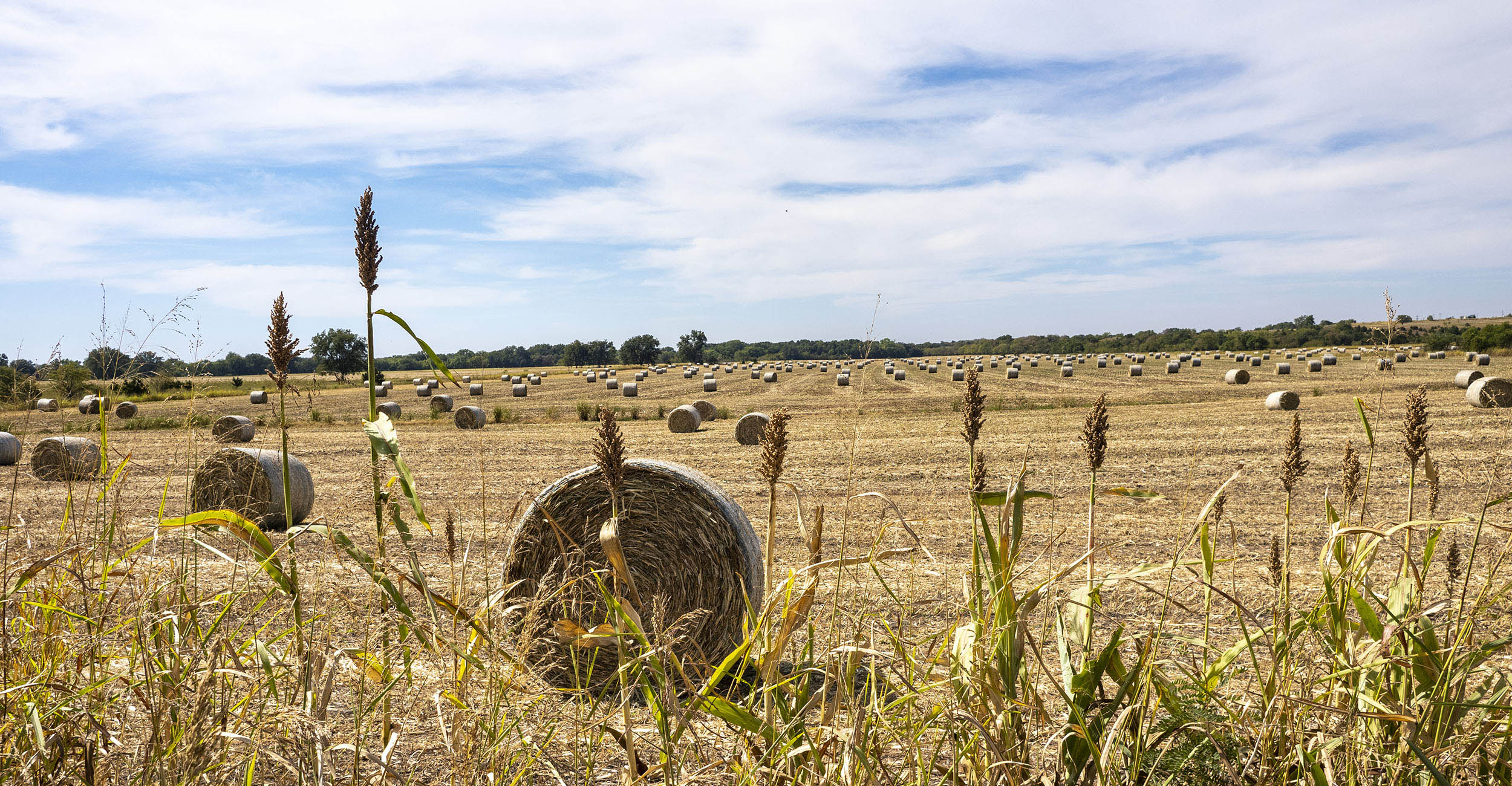
Take caution, read labels when feeding failed crops
Tuesday, October 25, 2022
Media Contact: Gail Ellis | Editorial Communications Coordinator | 405-744-9152 | gail.ellis@okstate.edu
Oklahoma ranchers are getting creative with alternative feedstuffs this fall because the drought has drastically reduced normal hay yields.
“It’s been an unusual year, and all summer crops have potential to be failed out,” said Todd Baughman, Oklahoma State University Extension specialist for row crop weeds. “Producers should make sure they’re clear with their insurance companies and have the ability to turn that crop into a forage or feed value.”
Some producers are choosing to bale up failed summer crops, such as soybeans or cotton. However, not everything that can be swept into windrows and fed as hay is safe for livestock to eat. Individual producers and hay customers should research the chemicals applied to crops before converting a field to feed or forage.
Baughman said most failed crops this year received herbicide treatments but contain lower amounts of fungicides or insecticides.
“The biggest issue is each individual label is different in regard to what you can or can’t do from a feed or forage or hay standpoint,” he said. “Even within that specific label, it may vary between crops. For instance, there may be a seven-day restriction on corn or grain sorghum or a 30-day restriction or you can’t even feed cotton or soybeans.”
Baughman said there are two key things to remember when reading labels:
- The specific pesticide label of the product applied must be checked and not just a label with a similar active ingredient. For example, if a generic form of glyphosate was applied rather than Roundup®, producers must refer to the label of the specific glyphosate formulation and not the Roundup®
- Products, such as atrazine and 2,4-D, have individual labels, but if a pre-mix of two products was applied, that could change the feeding restrictions. Therefore, the actual premix label should be consulted.
“The most important thing is consulting the label,” Baughman said. “If there is no mention of forage or hay on the label for a particular crop, then it is an off-label use.”
Failed cotton can help extend the grazing season, replace hay and provide additional revenue for an operation. Dave Lalman, OSU Extension beef cattle specialist, and Marty New, west district area livestock specialist, said the seed, lint, boll and leaf components of the cotton plant are a nutritional feed source, but cattle will not consume much of the stalk unless the field is first overgrazed.
“Leaf material will decline rapidly once the bottom leaves begin to yellow,” New said. “Most cotton fields will provide additional grazeable forage in the form of grass or forbs around field edges, fences and waterways.”
The leaf, boll, lint and seed should average around 15 to 20% protein and around 55 to 60% total digestible nutrients, which is the equivalent to energy common in average-quality grass hay, Lalman said.
The OSU Extension specialists said research indicates each acre of a poor cotton crop could provide 20 days of grazing per cow while an acre from a good crop might provide around 41 days of grazing per cow.
“Cattle will graze the more palatable and high-nutritional value plant components first,” New said. “For this reason, the grazing period can be extended by strip grazing or rotational grazing. To make the most efficient use of crop residue, no more than one week’s worth of grazing area should be offered for each grazing period.”
When feeding failed cotton, producers should also consider the possibility of gossypol toxicity. Gossypol is a natural toxin present in the cotton plant that protects it from insects.
“Ruminants with fully functional rumens can detoxify gossypol because the ruminal microorganisms bind the toxin so it can be absorbed,” Lalman said. “Non-ruminants and pre-ruminant calves (less than four months of age) are unable to tolerate gossypol. It is not recommended to graze cotton residue with breeding bulls within 60 to 90 days of the breeding season.”
Labels for pesticides, fungicides and herbicides can be confusing and hard to find on packaging. OSU Extension county educators are available to help explain label restrictions and alleviate concerns.
